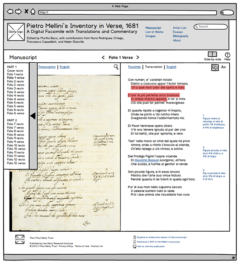Fiona Tan—photographer, video artist, writer, and director—is the 2016-17 Getty Research Institute artist-in-residence. Her time at the Getty coincides with the Scholars Program research theme Art and Anthropology. It would be inaccurate to characterize Tan’s work simply as “anthropological,” yet Tan explores a number of the same issues addressed under the rubric of anthropology. Notions of individual and group identity, as well as relationships between people and place are common themes in her art, which can take many forms, including multi-channel video installations, photobooks, and feature films.
Tan’s most recent project, Ascent, is an 80-minute tour de force comprising more than 4,000 still images of Mount Fuji. Ranging from hand-colored nineteenth-century photographs to twenty-first-century cellphone snapshots, the images reveal how the nation’s history and culture are inextricably linked to the sacred mountain. The Izu Photo Museum, located near the base of Mount Fuji, allowed Tan to use its collection of historical photographs, and they collaborated with her to build a website where the public could upload pictures of the mountain. The archival and crowdsourced images together create a meditative experience, as the iconic summit appears to morph and evaporate from one moment to the next.
It is the film’s voiceover, however, that pulls in the audience and connects us to the subject matter. A conversation between an English woman and her deceased Japanese lover weaves together national history and personal tragedy in a bilingual exchange that traverses time, space, and language. Ascent is an experimental film rather than a conventional Hollywood movie, yet it is unmistakably cinematic. The North American premiere was held at the Getty Center on January 10 as part of Tan’s residence here. With a screen measuring two stories high, it was an appropriately monumental venue for viewing an art piece that so prominently features Japan’s tallest peak.

Still from Ascent, 2016. Courtesy of Fiona Tan
Last October a more intimate screening was held at the Getty’s Scholar Housing, the modest Brentwood apartment complex that Getty fellows call home during their academic and artistic residencies. Twenty visiting fellows crowded around a large table in the common room to view and discuss some of Tan’s video art. The event was held at the suggestion of Hans Belting, one of the Getty’s visiting scholars in fall 2016. Belting is among the most prolific and renowned art historians of the last fifty years. He has published on topics ranging from medieval Christian icons to Marcel Duchamp, and his 2011 book, An Anthropology of Images: Picture, Medium, Body, crosses boundaries of academic disciplines. Belting’s current research deals with contemporary art in the global context, and he has been following Tan’s work for more than a decade. This event allowed Belting and other scholars to engage the artist on practical and theoretical issues related to her practice. Tan offered insight into her working methods and approaches to various media, and she shared details about how she carried out some of the projects.
Among the works Tan discussed during this convening was Correction, a series of video portraits from 2004 that she filmed inside American prisons. She recorded footage of hundreds of inmates and guards who volunteered to pose silently for the camera. Their portraits became part of an installation in which the videos were projected onto six screens arranged in a circle. Viewers of Correction could enter the circle to observe this segment of the population that is typically hidden from the public. Yet a sort of reversal occurred during the viewing process, as the videos appeared to gaze back, creating an eerie sense that the viewer was the one being observed.
Since arriving at the Getty, Tan has immersed herself in research, and is currently focusing on a series of portraits by Théodore Géricault from the 1820s. He painted ten individuals suffering from different mental illnesses, but only five of these artworks survive. Tan is writing an extensive essay and preparing to produce a new installation inspired by these missing portraits; this project, entitled 10 Madnesses, will also culminate in the publication of a Getty Research Institute artist’s book. But beforehand, she is thoroughly investigating the history of psychology and healthcare, nineteenth-century French medical culture, and the specific context of the people Géricault painted. She has been delving into archives in Paris and has already discovered lists of inmates and patients from the hospital and asylum that most probably housed Géricault’s subjects. Far from mere depictions of oddities, the paintings are detailed character studies of real individuals. Although her chosen media differ from Géricault’s, Tan is an experienced portraitist, and it will be exciting to see what develops from this intriguing project.
To learn more about Fiona Tan’s work, and for information about upcoming screenings of Ascent, visit visit her website, fionatan.nl.





Comments on this post are now closed.